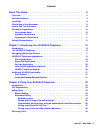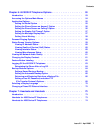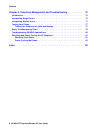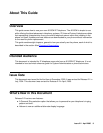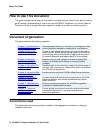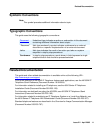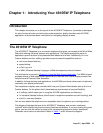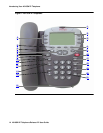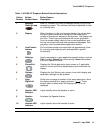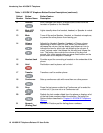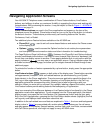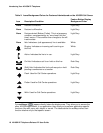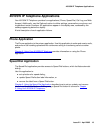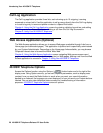
Issue 2.2 April 2005 13
Chapter 1: Introducing Your 4610SW IP Telephone
Introduction
This chapter introduces you to the layout of the 4610SW IP Telephone. It provides a description
for each functional button and other phone characteristics, briefly describes each 4610SW
application, and provides basic instructions for navigating display screens.
The 4610SW IP Telephone
The 4610SW IP Telephone is an innovative telephone that gives you access to the World Wide
Web while offering the latest features and applications. The display area allows up to six
application-specific buttons to be presented and labeled at one time. Additionally, six Line/
Feature buttons and four softkeys provide access to powerful capabilities such as:
● call server-based features,
● speed dialing,
● a Call Log, and
● a WML (Wireless Markup Language, a Web development protocol) browser.
This last feature is covered in Chapter 5: Using the Web Access Application
. The WML browser
provides access to Web sites tailored specifically for devices with smaller display screens like
cell phones and Personal Data Assistants.
In addition to these features and applications, the 4610SW provides a robust menu of options to
customize your phone preferences.
Your telephone’s display area coincides with how your System Administrator sets up the Line/
Feature buttons. On the phone itself, these features provide ease of use and flexibility:
● 4 softkeys (which assist you in using the 4610SW applications and features),
● 14 standard (labeled) buttons (which assist in telephone operation and call handling), and
● a built-in, two-way Speaker.
You can also attach the telephone to an adjustable stand, to optimize your viewing position.
This diagram illustrates the face of the 4610SW IP Telephone, and contains numbered
“callouts” which identify the phone’s primary features and buttons. If you are viewing this guide
online, you can click the callout to jump to the corresponding feature or button description.
Otherwise, each callout is described in detail in Table 1
, which follows the diagram.



